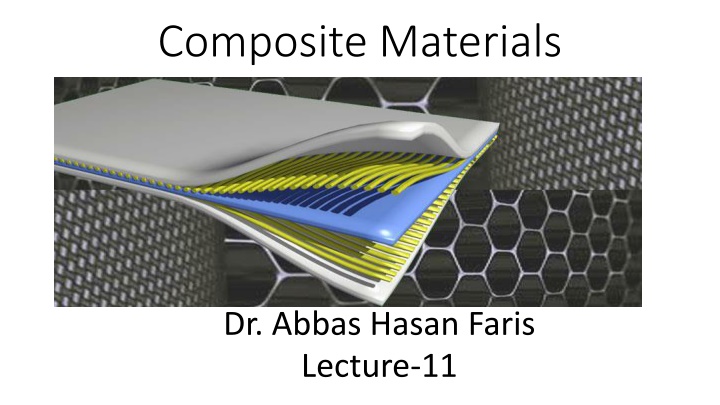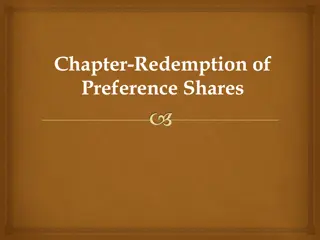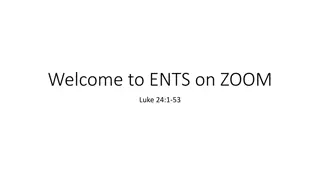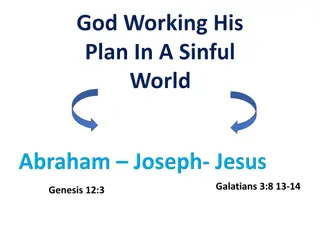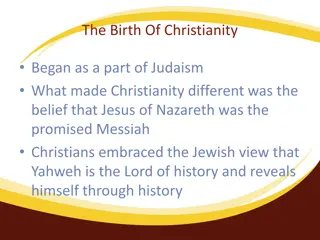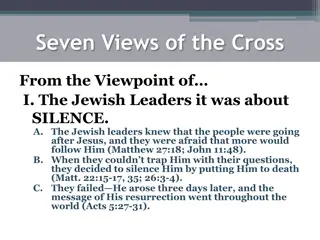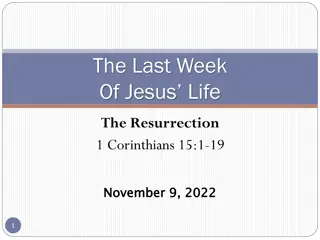Jesus' Crucifixion: Reasons and Redemption
Delve into the multifaceted reasons behind Jesus' sacrificial death, from threatening the temple to fulfilling God's will for humanity's salvation. Explore the profound impact of his sacrifice on delivering believers from the present age's evils and the call for Christians to live transformed lives in light of this ultimate sacrifice.
Download Presentation

Please find below an Image/Link to download the presentation.
The content on the website is provided AS IS for your information and personal use only. It may not be sold, licensed, or shared on other websites without obtaining consent from the author.If you encounter any issues during the download, it is possible that the publisher has removed the file from their server.
You are allowed to download the files provided on this website for personal or commercial use, subject to the condition that they are used lawfully. All files are the property of their respective owners.
The content on the website is provided AS IS for your information and personal use only. It may not be sold, licensed, or shared on other websites without obtaining consent from the author.
E N D
Presentation Transcript
Composite Materials Dr. Abbas Hasan Faris Lecture-11
Pultrusion Process The pultrusion process is a low-cost, high-volume manufacturing process in which resin-impregnated fibers are pulled through a die to make the part. Pultrusion creates parts of constant cross-section and continuous length. 1- Major Applications Pultrusion is used to fabricate a wide range of solid and hollow structures with constant cross-sections. The most common applications are in making beams, channels, tubes, flooring and equipment support, walkways and bridges, ladders, light poles, electrical enclosures,etc.
2- Basic Raw Materials Pultrusion is typically used for making parts with unidirectional fibers. E- glass, S-glass, carbon, and aramid fibers are used as reinforcements, the most common type being E-glass rovings. Fabrics and mats are also used to add bidirectional and multidirectional strength properties. Unsaturated polyester is the most common resin material for the pultrusion process. Pultrusion offers an attractive performance-to-price ratio as well as easy processing. Various types of fillers are added to the polyester resin to improve the insulation characteristics, chemical resistance, and fire resistance, and to lower the overall cost. Calcium cabonates are added to lower the cost of the pultruded part.
3- Tooling For the pultrusion process, steel dies are used to transform resin-impreg- nated fibers to the desired shape. Dies have a constant cross-section along their length, except for some tapering at the raw material entrance. The dies are heated to a specific temperature for partial or complete cure of the resin. Tooling costs depend upon the complexity of the part as well as the volume requirement. The cost of the die ranges from $4000 to $25,000, depending on the size and cross-section of the part. 4- Making of the Part To make composite parts using the pultrusion process, spools of rovings are placed on the creel similar to the filament winding process and then reinforcements are passed through a resin bath where fibers are impregnated with the resin.
Therearetwomajorimpregnationoptions. Inthefirstoption, rovingsare passedthroughanopenresinbath. Thereinforcementcanpasshorizontally insidethebathorupanddownthrough aguidingmechanism. In the second option, reinforcement passes through a cavity where resin is injected under pressure. The advantages of this method are no or minimum styrene emission and low resin loss.
Reinforcements thus impregnated are passed through a heated die. The die has a slight taper at the entrance and a constant cross-section along its length. The resin cures and solidifies as it passes through the heated die. The length of the die depends on resin reactivity, part thickness, and production rate requirements. The higher the resin reactivity, the shorter the die length requirement. The solidified material is pulled by caterpillar belt pullers or hydraulic clamp pullers. These pullers are mounted with rubber-coated pads that grip the composite material. The puller is distanced from the die in such a way that the composite material cools off enough to be gripped by the rubber pads.
5- Methods of Applying Heat and Pressure During pultrusion, there is no external source to apply presure for consolidation. Therefore, this process is known as a low-pressure process. The resin-impregnated rovings or mat, when passed through a restricted passage of the die, gets compacted and consolidated. The die is heated to a temperature and applies heat to incoming material for desired cure. The heat in the die cures the resin. The part coming out of the die is hot and is allowed to cool before it is gripped by the puller. 6- Advantages of the Pultrusion Process 1. It is a continuous process and can be compeletely automated to get the finished part. It is suitable for making high-volume composite parts. Typical production speeds are 2 to 10 ft/min. 2. It utilizes low-cost fiber and resin systems and thus provides production of low-cost commercial products.
7- Limitations of the Pultrusion Process 1. It is suitable for parts that have constant cross-sections along their length. Tapered and complex shapes cannot be produced. 2. Thin wall parts cannot be produced. 3. Fiber angles on pultruded parts are limited to 0 . Fabrics are used to get bidirectional properties. 4. Structures requiring complex loading cannot be produced using this process because the properties are mostly limited to the axial direction.
Thermoset versus Thermoplastic Pultrusion Physically, thermoset pultrusion involves an additional station of a resin bath between fiberrovings and the preheater .Despite this additional step, the thermoset and thermoplastic pultrusion processes are physically quite similar. They both pull fibers and resin through a converging die to form continuous composite sections. viewpoint, the flow in thermoplastic pultrusion is modeled differently than in thermoset pultrusion. In thermosets, one uses Darcy s law to model resin impregnation and the heat transfer involves cure kinetics, whereas in thermo-plastic pultrusion due to the high viscosity of the material, Darcy s law is not the correct model to calculate the relationship between flow rate and pressure drop. Also, due to the shear thinning nature of thermoplastics, one would expect the viscosity to vary inside the die. However, from an analysis
The heat transfer models do not usually involve cure but sometimes will consider the crystallization of the thermoplastics as it passes through the cooling die. In this section, the focus will be on development of a model that can describe the flow dynamics for a thermoplastic matrix as the material passes through the tapering die. The goal will be to calculate the pressure drop as a function of the pulling speed and material parameters such as viscosity and fiber volume fraction.
